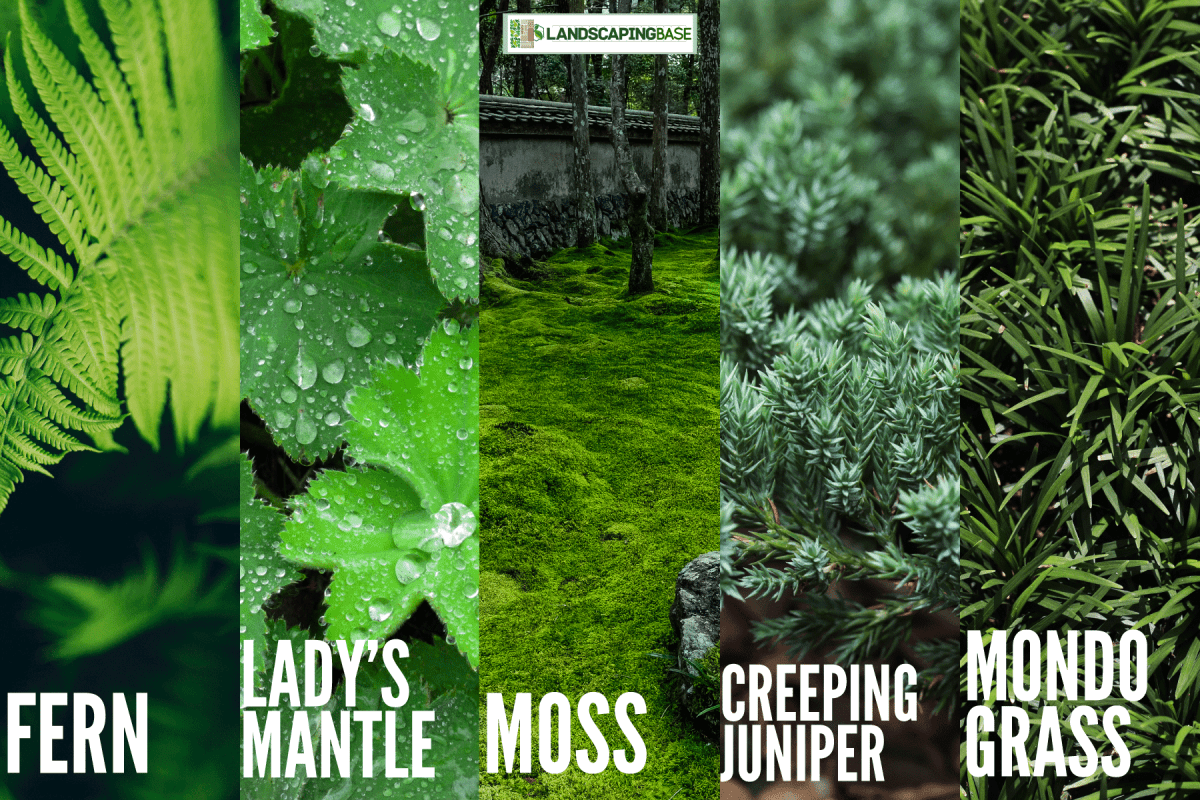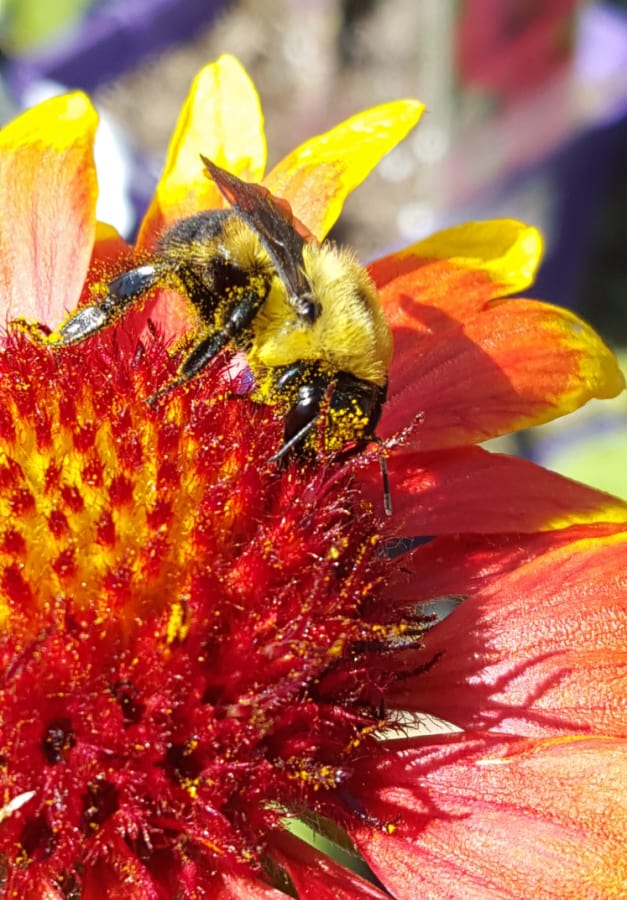Why would we want to plant more plants that do not attract bees? Are bees not in danger of extinction? Well, there are many people, including clients of mine, who are allergic to bee stings, and yet want a beautiful landscape to enjoy. We can plan their landscapes to include flowers that are less attractive to bees.
Finding any flowers that do not attract bees has been a challenge however. Before we get to the plants, we need to know what bees are attracted to, and why. I am including all bees in this list, as research is limited by species. Most people are just allergic to honeybee or wasp stings, but bumblebees and even sweat bees can have a nasty sting when provoked.
Bees play a crucial role as pollinators in the garden ecosystem But for those with bee allergies, attracting swarms of busy bees is the last thing you want around outdoor living spaces The good news is that there are many flowering and non-flowering ground cover plants that offer lush greenery without drawing in bees.
Why Avoid Bee-Attracting Flowers?
For most gardeners, bees are highly desirable visitors. Their pollination services help fruits and vegetables thrive and provide the raw ingredients for honey. But if you or family members have an allergy to bee stings, those benefits don’t outweigh the risks.
Children and pets who may accidentally disturb resting bees are also at higher risk for getting stung. And areas like patios, pools, and play areas are best kept bee-free for peace of mind.
How Bees Find Flowers
To keep bees away, it helps to understand what attracts them to certain flowers in the first place.
Bees have excellent vision and can see all colors except for red. They are drawn to blooms in purple, violet, yellow, blue, and white. Flowers with contrasting colors, like spots or bulls-eye patterns, are especially tempting.
But scent is the most powerful bee magnet. Bees can detect the subtlest fragrance from over a mile away. Sweet, fresh floral scents are irresistible.
Non-Flowering Ground Covers
One sure way to prevent bee interest is to avoid flowers altogether. Many popular ground covers offer year-round greenery without blooms.
Irish moss forms a dense emerald carpet that chokes out weeds. Tiny white flowers may occasionally appear in spring but are insignificant.
With blue-gray foliage and yellow margins, ajuga offers multi-season color interest without flowers after the initial spring bloom period. It thrives in shade.
Sweet woodruff has lacy green leaves that emit a sweet scent when crushed. Small white spring flowers are negligible to bees. It spreads well in shade.
Lilyturf varieties like Silver Dragon and Big Blue have striking variegated foliage. They spread steadily to form lush, flowering-free lawns.
Dead nettle produces vivid red and green leaves. Fast-growing varieties like Redshank quickly fill in flower beds and prevent erosion without blooms.
Bee-Free Flowering Ground Covers
For those who want flowers mixed in for added color, there are still many low-growing options that will not tempt bees.
- Snow-in-summer – Tiny white blooms on gray-green foliage in full sun areas
- Creeping Jenny – Bright golden leaves cascade nicely over walls and containers
- Irish moss – Velvety emerald carpet with occasional insignificant white blooms
- Sweet woodruff – Lacy green leaves and tiny white blooms with sweet aroma
- Mazus – Dense purple blooms under 3 inches tall held above green foliage
- Dwarf lilyturf – Grass-like sterile foliage forms tidy 2-5 inch clumps
Planting Tips for Success
When planting ground covers, give them room to spread. Space plants 8-12 inches apart depending on mature size. Leave a 2-3 inch gap between walls and walkways.
Choose a sandy, gritty soil and avoid rich garden soil and compost which can fuel leggy growth and sparse spreading. Set pavers and stepping stones slightly above grade.
Water new plantings daily until established then only when the top few inches of soil become dry. Apply a thin layer of mulch after planting to reduce weeds. Limit fertilizing which can trigger flowering in some varieties.
Fast-Spreading vs Slow-Growing Ground Covers
Fast spreaders like Irish moss, blue star creeper, and creeping Jenny quickly fill large areas but require frequent pruning to control.
Slow growing types such as mondo grass and lilyturf are better for walkways and patios where you don’t want plants taking over.
Avoid extremely aggressive growers like vinca minor or English ivy that can take over landscapes and damage foundations, walls, and pipes.
Provide Shade and Moisture
Most ground covers thrive best in part shade to full shade. Soil moisture is also key to help ground covers establish and spread quickly to outcompete weeds.
Mulch around new plantings to regulate soil temperature and retain moisture. In dry climates, irrigation will be needed during the first year until root systems develop.
Discourage Bees in Other Ways
Along with avoiding their favorite flowers, there are other tactics to make yards less inviting to foraging bees.
-
Plant fragrant herbs like lavender, basil, and mint which can mask flowering scents bees love.
-
Set out shallow dishes of heavily scented oils like clove, lemongrass, or eucalyptus which bees dislike.
-
Use electronic insect repellers designed to mimic bee alarm pheromones. Research shows these can deter up to 80% of bees.
-
Avoid wearing bright floral prints, perfumes, and scented lotions outdoors which attract curious bees.
-
Keep bee habitat like fallen logs, unkempt areas, and standing deadwood away from living areas and play spaces.
By selecting the right plants and discouraging bees in other ways, you can design an attractive bee-free landscape. Non-flowering ground covers like Irish moss, sweet woodruff, and lilyturf create lush, living carpets without luring bees. For color, snow-in-summer, creeping Jenny, and mazus add blooms too small to attract pollinators. A bee-free yard lets you relax and enjoy the outdoors without worry.

What colors do bees see and how do we know?

Bees see quite a different range of colors in comparison to humans. We know this because scientists and researchers have studied bees reactions to different sugar-water feeder colors. Studying a bee’s range of vision is helpful in preventing their future downfall. If we know what colors they are most attracted to, then we can plant more flowers that will provide them with nectar and pollen.
Bees can see most colors from orange to ultraviolet (which humans cannot see), but they cannot see infrared or red. This knowledge is especial for this post, though red is not an easy to find color even in plants. Becuase most plants need pollination by insects or animals to produce viable seed, God created them in close association with bees.
How can we use this knowledge of bee’s vision to benefit gardeners? Bees see red and infrared as black. Now, some flowers may use red as an alternation between other colors, almost creating a landing strip light section to draw bees into the heart of the flower. If you see a pattern of red and yellow like on Blanketflower (Gaillardia species), then you know that plant has a pattern to attract bees to the center.
The following flowers can be added to the garden to repel bees (and wasps!)
- Basil – this aromatic herb is great for pasta night, as well as repelling bees
- Geranium – several scented cultivars repel not only bees, but mosquitoes and wasps as well
- Marigolds – bees not only do not pollinate these annuals, but are also repelled by them
- Artemesia – wormwood or other members of this genus are very aromatic, and have both scented leaves and flowers that repel insects
There may be other strongly aromatic plants that repel bees, but they are not yet known. Try some in your garden to see how they work.
What plants do not attract bees?
FAQ
What plant do bees hate the most?
Does ground cover attract bees?
Our Pollinator Friendly Groundcover Collection is the perfect way to create a garden border to attract butterflies and bees. You will always have something in bloom from spring to fall, providing nectar and habitat to pollinators throughout the growing season.
Do creeping phlox attract bees?
Phlox is a Native Plant that Attracts Native Pollinators
Bumble bees, along with honey bees, butterflies, hummingbirds and other pollinators are frequent visitors to Phlox blooms. The creeping phlox (Phlox subulata) is a perennial that is native to the eastern seaboard and is not usually grown from seed.
What kind of clover does not attract bees?
The idea of seeding mini or micro clovers is increasingly popular. These clovers are normally short-statured cultivars of the species listed above. Micro clover lawns are supposed to require even less maintenance and have smaller flowers that attract fewer bees.
